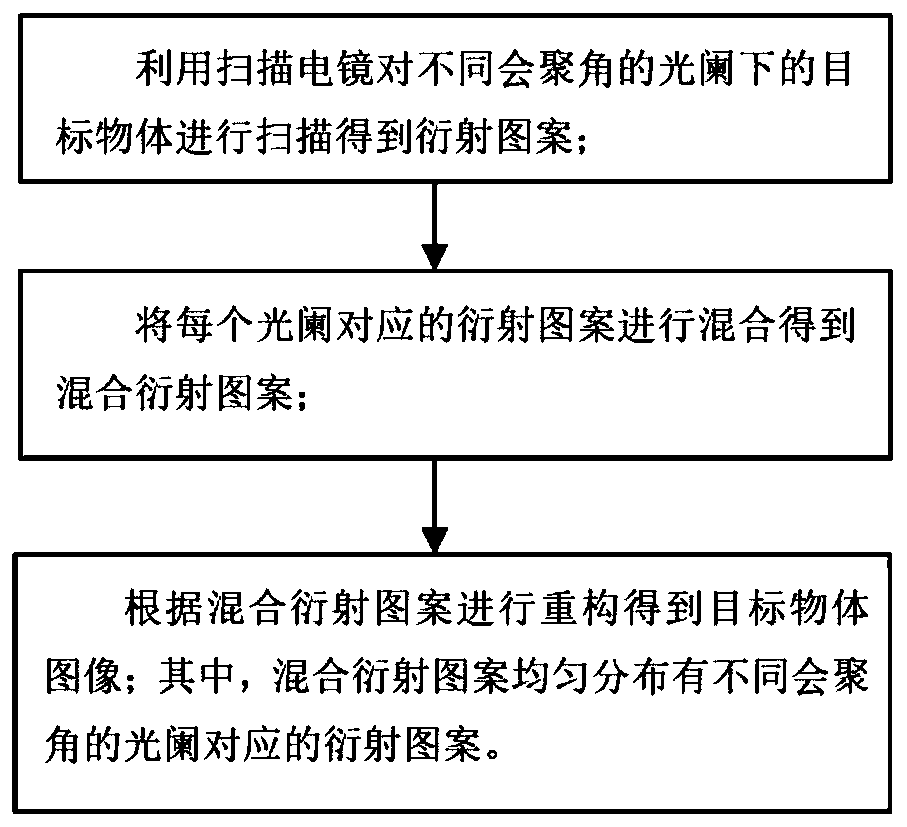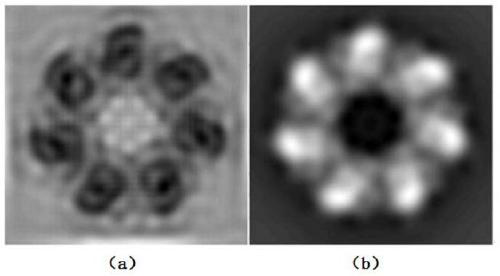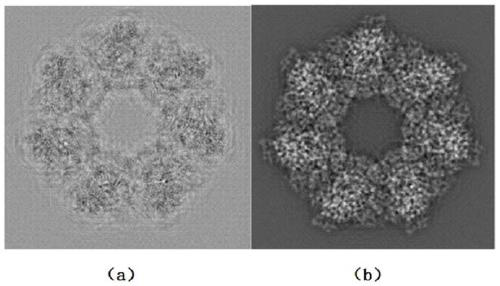Scanning electron microscopic imaging method
A technology of scanning electron microscopy and imaging methods, applied in image data processing, 2D image generation, instruments, etc., to achieve high recognition and noise removal effects
- Summary
- Abstract
- Description
- Claims
- Application Information
AI Technical Summary
Benefits of technology
Problems solved by technology
Method used
Image
Examples
Embodiment 1
[0042] Combine figure 1 As shown, a scanning electron microscopy imaging method of the present invention uses a scanning electron microscope to scan target objects under apertures with different convergence angles to obtain diffraction patterns. It is worth noting that scanning is performed under apertures with different convergence angles. The frequency information obtained is different. The aperture radius with a smaller convergence angle mainly obtains low-frequency information, and the aperture radius with a larger convergence angle mainly obtains high-frequency information. Further, the diffraction patterns corresponding to each diaphragm are mixed to obtain a mixed diffraction pattern. It should be noted that the mixed diffraction pattern is uniformly distributed with the diffraction patterns corresponding to the diaphragms with different convergence angles, that is, each diaphragm in the mixed diffraction pattern The number of corresponding diffraction patterns is the sa...
Embodiment 2
[0068] The content of this embodiment is basically the same as that of embodiment 1. This embodiment takes the simulated atomic potential field of biomolecules as the target object, the target object is a 2048x2048 complex number matrix, and the electron beam wave function generated by the circular aperture is used as the probe function , Is a complex number matrix of 1024x1024 size. The diaphragms selected in this embodiment are a circular diaphragm of 1mrad and a circular diaphragm of 10mrad. The defocus of the selected target object under the circular diaphragm of 1mrad is 1200nm, and the defocus is 1200nm under the circular diaphragm of 10mrad. The selected target object defocus is 120nm, which can ensure that the electron beam probe functions are similar in size at different convergence angles.
[0069] The probe function P can be obtained by the beam passing through the two apertures after propagation k (r) (k=1, 2), where k=1 is a 1mrad circular diaphragm, and k=2 is a 10m...
Embodiment 3
[0072] The content of this embodiment is basically the same as that of embodiment 1. The simulated atomic potential field of biomolecules and graphene is used as the target object. The target object is a complex matrix of 2048x2048 size, and the electron beam wave function generated by the circular aperture is used as the probe function. , Is a complex number matrix of 1024x1024 size. The diaphragms selected in this embodiment are a circular diaphragm of 1mrad and a circular diaphragm of 12mrad. The defocus of the target object selected under the circular diaphragm of 1mrad is 1200nm, and the defocus is 1200nm under the circular diaphragm of 12mrad. The selected target object defocus is 100nm, which can ensure that the electron beam probe functions are similar in size at different convergence angles.
[0073] The probe function P can be obtained by the beam passing through the two apertures after propagation k (r) (k=1, 2), where k=1 is a 1mrad circular diaphragm, and k=2 is a 10...
PUM
 Login to View More
Login to View More Abstract
Description
Claims
Application Information
 Login to View More
Login to View More - R&D
- Intellectual Property
- Life Sciences
- Materials
- Tech Scout
- Unparalleled Data Quality
- Higher Quality Content
- 60% Fewer Hallucinations
Browse by: Latest US Patents, China's latest patents, Technical Efficacy Thesaurus, Application Domain, Technology Topic, Popular Technical Reports.
© 2025 PatSnap. All rights reserved.Legal|Privacy policy|Modern Slavery Act Transparency Statement|Sitemap|About US| Contact US: help@patsnap.com



